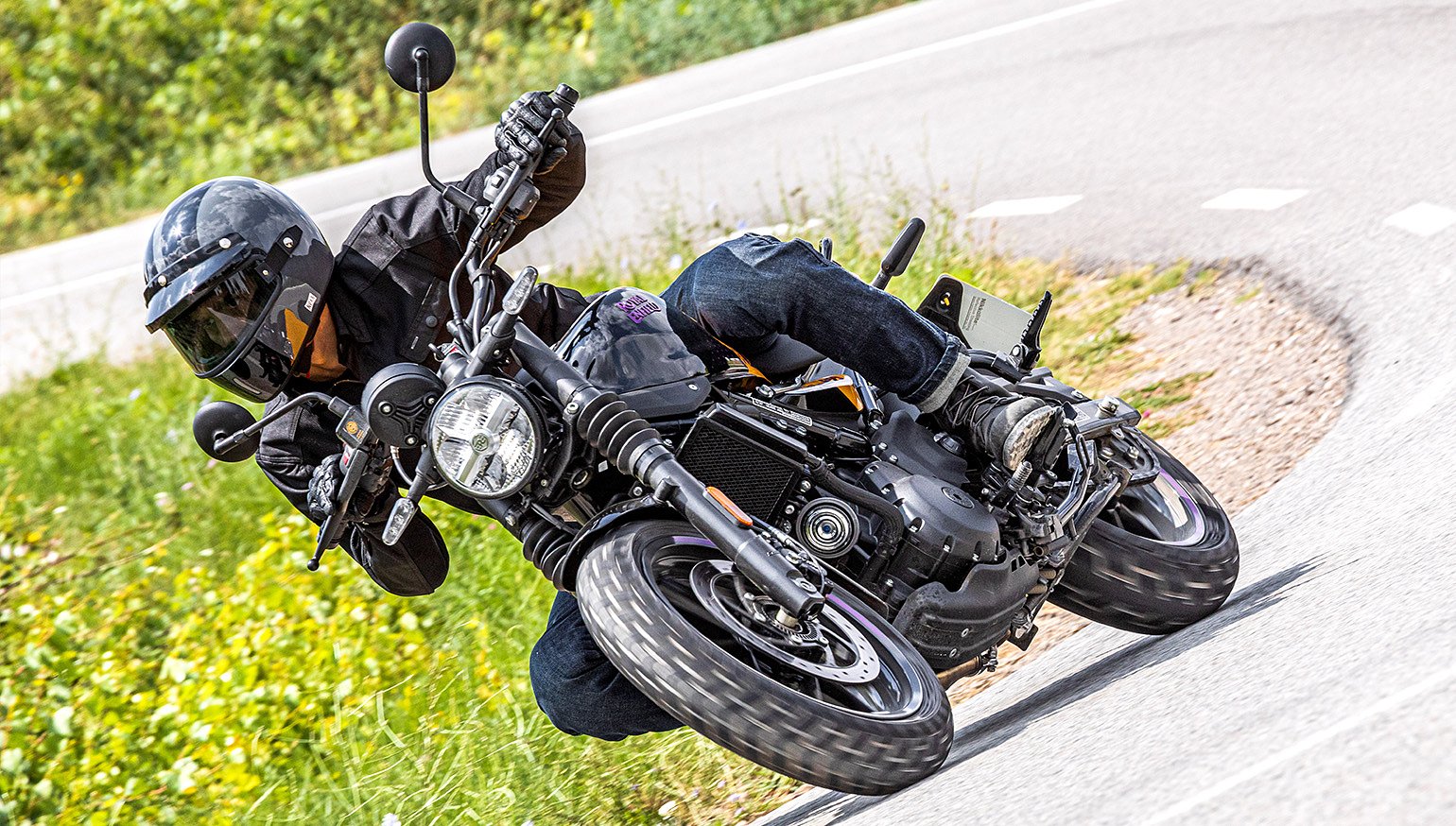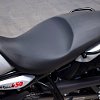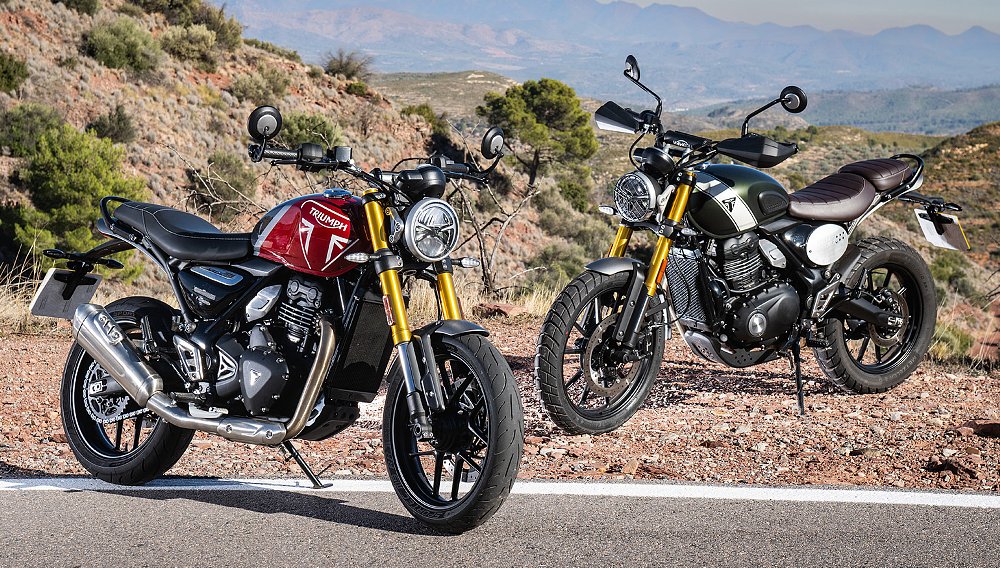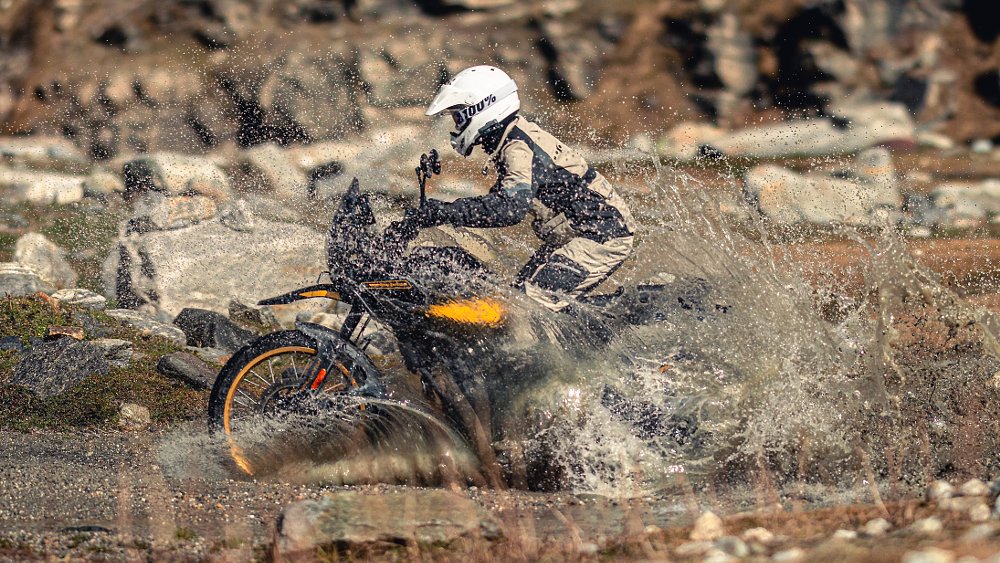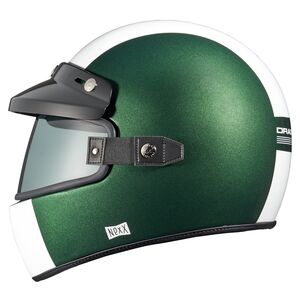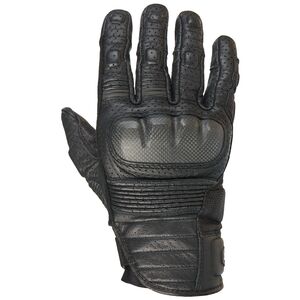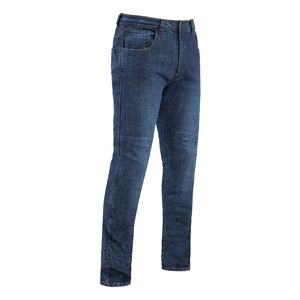“One small change can make a big difference.”
It’s the stuff of motivational posters. It’s the stuff of Pinterest boards. And in certain cases, it’s true. (Just add a Mentos to Diet Coke and find out.) In other instances, a small change is just that, a small change. Oftentimes, it takes a series of changes to achieve transformative results. At least, that was Royal Enfield’s approach with its new roadster — the Guerrilla 450.
See the difference
The Indian OEM introduced its all-new Himalayan 450 last October. It was a fresh restart for the adventurer-tourer, thanks to a liquid-cooled Sherpa 450 single and twin-spar frame that made it Enfield’s first truly modern motorcycle. To my surprise, the Himmy wasn’t alone in RE’s incubator. The brand also developed the Guerrilla 450 alongside its adventure-seeking cousin. The familial ties go deep too.
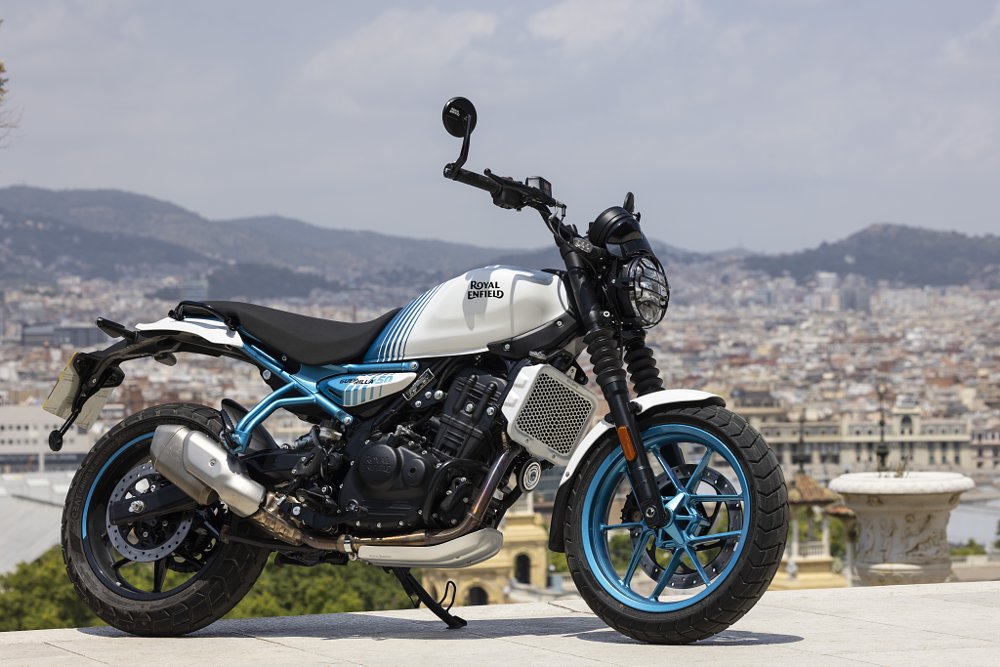
Royal Enfield’s new single-cylinder engine debuted with an 84 mm bore and an 81.5 mm stroke. Albeit nearly square, the new Sherpa 450 was a clear departure from the long-stroke (78 mm bore and 84 mm stroke), 411 cc lump found in past Himalayans. A four-valve cylinder head, dual overhead cams, and an 11.5:1 compression ratio were further evidence, and helped push the Sherpa up to 40 horsepower (at 8,000 rpm) and 29.5 foot-pounds of torque (at 5,500 rpm). The same thumper, right down to the gear ratios, beats at the heart of the Guerrilla.
Not everything from the Himalayan came along for the ride, though. Both models benefit from a ride-by-wire system but Enfield engineers tuned the Guerrilla’s throttle map for a more “urgent” response. While the Performance and Eco ride modes remain, the retro roadster isn’t meant to explore the wilderness (ironic for a model named the Guerrilla). As a result, neither ride mode features the switchable rear ABS offered on the Himalayan. Small changes, small differences. The same can’t be said for the Guerrilla’s chassis.
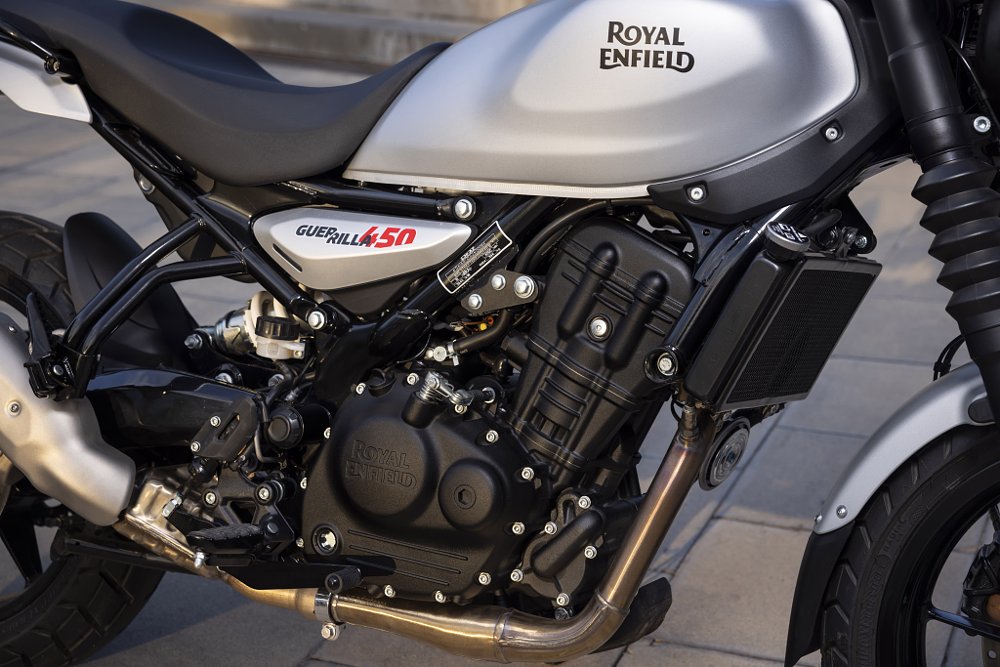
The GRR 450 touts a double downtube spine frame similar to its ADV relative, except a steeper headstock angle suits the naked’s road bias. So does its suspension. A 43 mm telescopic fork from Showa steps in for the Himalayan’s dual-purpose inverted unit while the rear shock earns a model-specific spring rate, damping settings, and linkage system. The Guerrilla also does away with the Himmy’s wire-spoked wheelset, adopting 17-inch cast wheels shod in street-sized CEAT Gripp XL Rad Steel tires (120/70 front and 160/60 rear). Minor tweaks, drastic results, as evidenced by the bike's dimensions.
The Guerrilla’s 21.8-degree rake is 4.8 degrees steeper than the Himalayan’s. Its 56.7-inch wheelbase is 2.7 inches shorter. Its 2.9-gallon gas tank may forfeit nearly 1.6 gallons of capacity but that lighter fuel load contributes to the bike’s 408-pound wet weight (claimed), 24 pounds under the Himmy’s 432-pound curb weight (claimed). The front end yields 5.5 inches of travel. The shock’s stroke totals 5.9 inches. That’s 2.4 inches and two inches fewer than the Himalayan, respectively. Sure, those stubbier suspenders drop the ground clearance to 6.7 inches (from the Himalayan’s 9.1 inches) but they also lower the seat height to an agreeable 30.7 inches. Give and take. The differences aren’t just visible on the spec sheet, either.

Royal Enfield’s efforts are most apparent in the Guerrilla’s styling. Few would confuse the model for an adventure bike. It’s a far cry from the Himalayan’s beaky mudguard and utilitarianism. The GRR’s aesthetic isn't as easy to pigeonhole. The silhouette and cast wheels recall roadsters. The tire tread and high rear fender lean toward scramblers. It calls to the youthful with colorful graphics and to the mature with classic color schemes. One-dimensional, it isn’t.
Alone, RE’s changes range from subtle to significant. Together, they amount to a model all its own. That was obvious when Royal Enfield pulled the covers off the 2025 Guerrilla 450 at Barcelona’s Llotja de Mar, a building originally erected in the 14th century. The neoclassical columns. The gothic arches. The rooms “where Gaudí and Picasso studied.” It’s a lot of pomp and circumstance for a small-capacity model, but appearances are only half of the story.
The only way to learn the other half was to actually ride the thing.
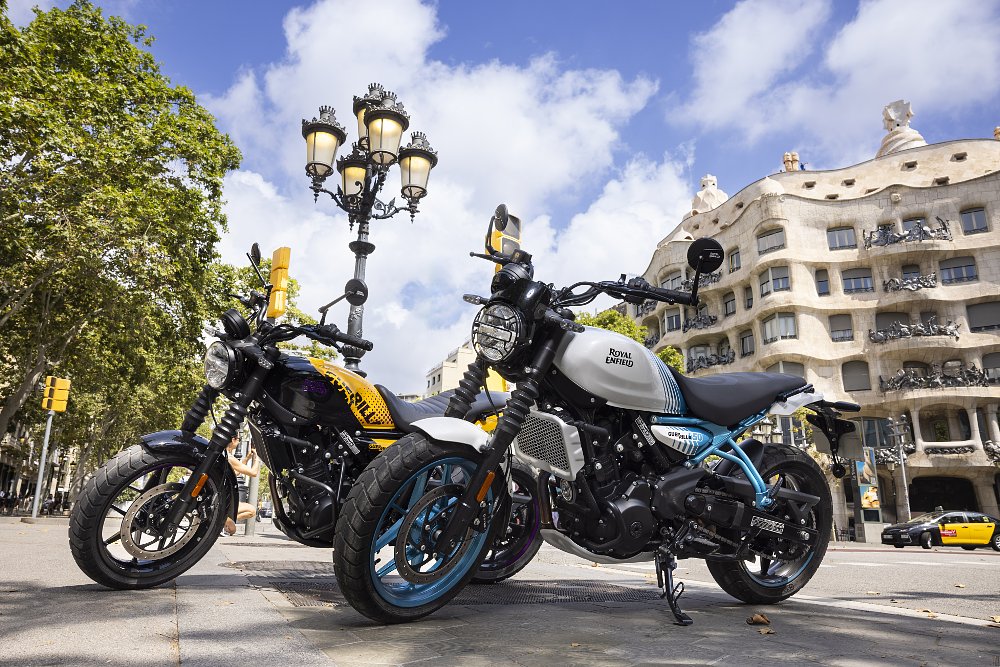
Feel the difference?
It’s 7:30 a.m. and it’s already 75 degrees F. In this underground garage, it feels more like monsoon season. A DJ spins bass-heavy hip-hop. Neon lights and subwoofer kicks bounce off the concrete walls. Let me remind you, it’s 7:30 in the morning. This is Royal Enfield’s idea of the Guerrilla. It’s edgy. It’s energetic, in a spin-class-at-the-crack-of-dawn kind of way. I would tolerate appreciate the ambiance if I wasn’t sweating like an Iberian pig in a slaughter shack.
With a belly full of chorizo and jamón, I finally swing my leg over the roadster’s seat. The cockpit is compact but not cramped. It’s comfortable but not cushy. I flip the key and the circular TFT dash springs to life; a classic layout nestled within a contemporary package that’s instantly pleasing to the eye. It’s time to see if the Guerrilla can do the deed. Barcelona’s urban sprawl and surrounding canyons are the ideal venue for such a test.
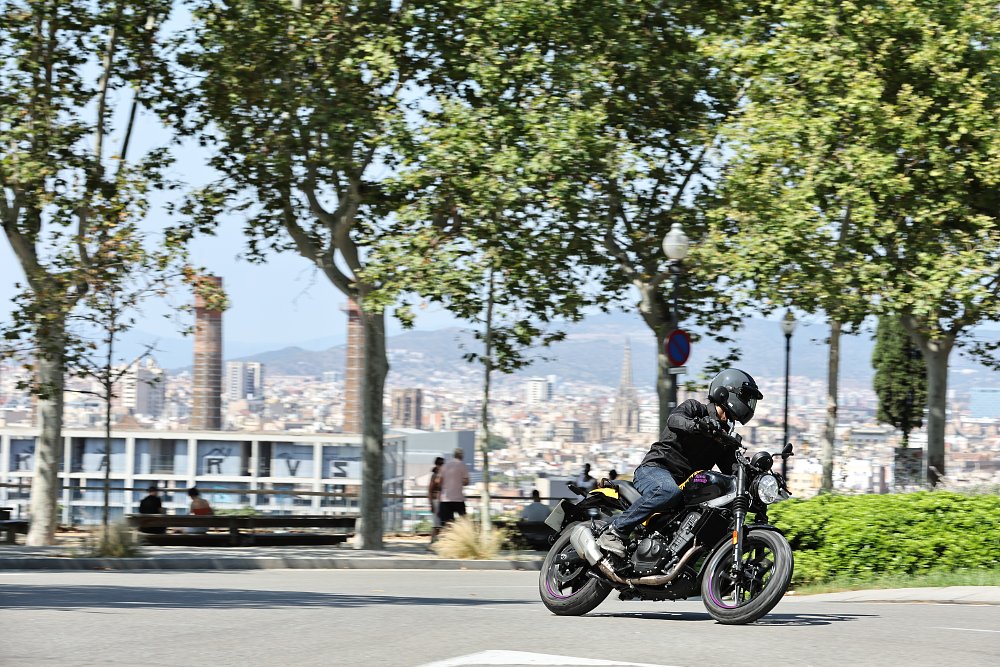
Pulling out of the parking structure and into bustling morning traffic, one thing becomes abundantly clear, the Guerrilla is at home in the city. Wedging between cars, whipping through roundabouts, and darting from light to light, it all suits the Guerrilla’s natural instincts. Light steering, a torquey midrange, and a relaxed riding position aid those pursuits. The reach to the bars is short. The rider’s elbows are slightly bent. Their hands positioned around abdomen height. The back remains nearly neutral, barely nudged over the tank.
At five feet, 10 inches with a 32-inch inseam, I tuck into this pocket with ease. My only nitpick with the rider triangle concerns its legroom. With such a low seat height, it’s impossible not to sacrifice something in the process. I often ride on the balls of my toes. On the Guerrilla, I hang my toes further over the footpegs to open up my knee bend. This leads to my boot dragging through several high-lean corners. A minor and infrequent price to pay, but a penalty nonetheless.

As the glittering waters of Port Vell give way to the vistas of Montjuïc, my focus shifts to the engine, or more accurately, the vibes it produces. In spite of all its technology, the Sherpa 450 is still a single. Vibrations should come as no surprise. They buzz through the tank and seat here, through the pegs and bars there. With that said, the vibes are most palatable between 4,000 and 6,500 rpm. They’re less tolerable by 7,000 rpm. Lucky for the rider, this thumper thrives in the midrange.
Royal Enfield didn’t fix what wasn’t broken with the Sherpa. That’s for better and for worse. According to RE’s top brass, 85% of the single’s torque is available starting at 3,000 rpm. Even if that’s technically true, the mill isn’t lively until around 4,000 rpm. Below that mark, it tends to bog and shudder, especially between 2,000 and 3,000 rpm. The engine’s sweet spot isn’t long-lived, either. By 7,000 rpm, it starts running out of steam, laboring up to its 8,750-rpm redline.

Keep the Sherpa in its happy place and it returns the favor with crisp throttle action and abundant pull (for a 450 cc single, anyway). That tends to require an itchy clutch finger and an active left foot. Slowing for a corner? Drop a gear. Blasting down a straight? Grab a gear, don’t rev it out. The six-speed gearbox excels in these situations. Shifts are direct but smooth, neither notchy nor vague. That’s thanks, in part, to the model’s slip-and-assist clutch, which also lightens the lever pull.
Master the Guerrilla’s narrow powerband and it barely misses a beat. That's especially true through the turns. Keep up the corner speed and the engine speed, and the roadster whisks you from corner to corner, connecting entry, apex, and exit like an astronomer connects constellation points. The handling is agile and accurate without feeling rigid. As a colleague put it, it’s “playful” but it’s also composed. The front end doesn’t plunge at the braking point. The shock doesn’t blow through its travel under acceleration. Of course, the Guerrilla’s setup can’t hold a candle to fully adjustable suspension, but it’s an admirable example among entry-level retro roadsters.
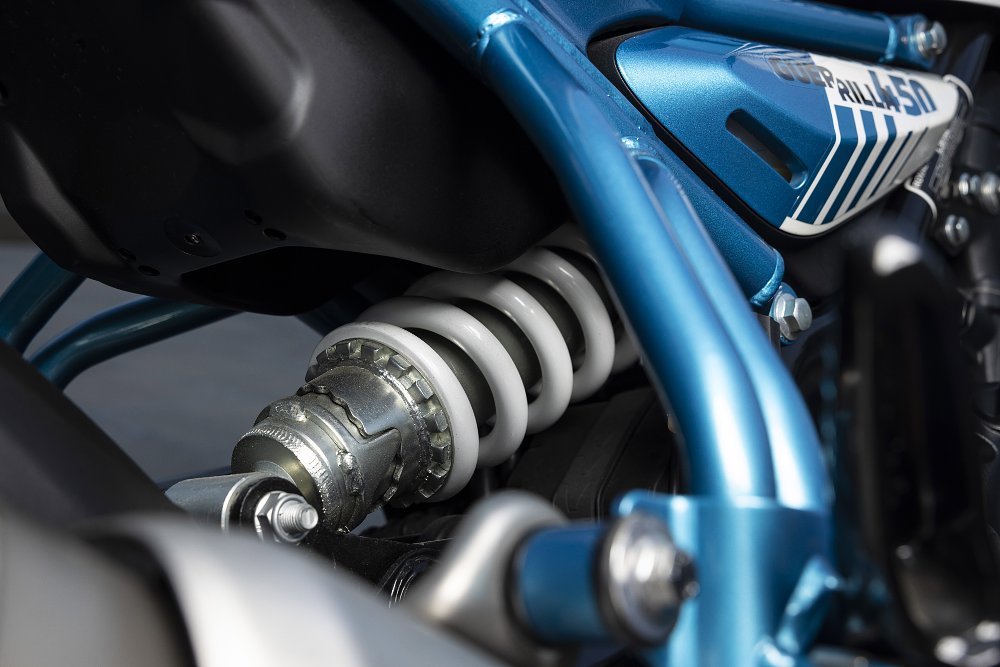
Even the CEAT Gripp XL Rad Steel tires outperformed my expectations. I’ll admit, I doubted its “budget” tag and tracker-style tread, but the rubber faltered not once throughout the day. That being said, what tire wouldn’t perform well on pristine Spanish tarmac in 98-degree heat? I’d still swap out the stock rubber for a stickier compound at the first opportunity. The same goes for the Guerrilla’s brakes.
I’ll say this up front: The ByBre braking system provides enough stopping power for the vast majority of the Guerrilla’s purposes. They’re sufficient for urban environs and joy rides, for commuting and bar-hopping, but push them further and further into the corner and their limitations become apparent. The Guerrilla deserves to be considered for sporty riding. Its agile chassis says so. At the same time, it deserves more aggressive brake pads and/or braided lines for such endeavors.
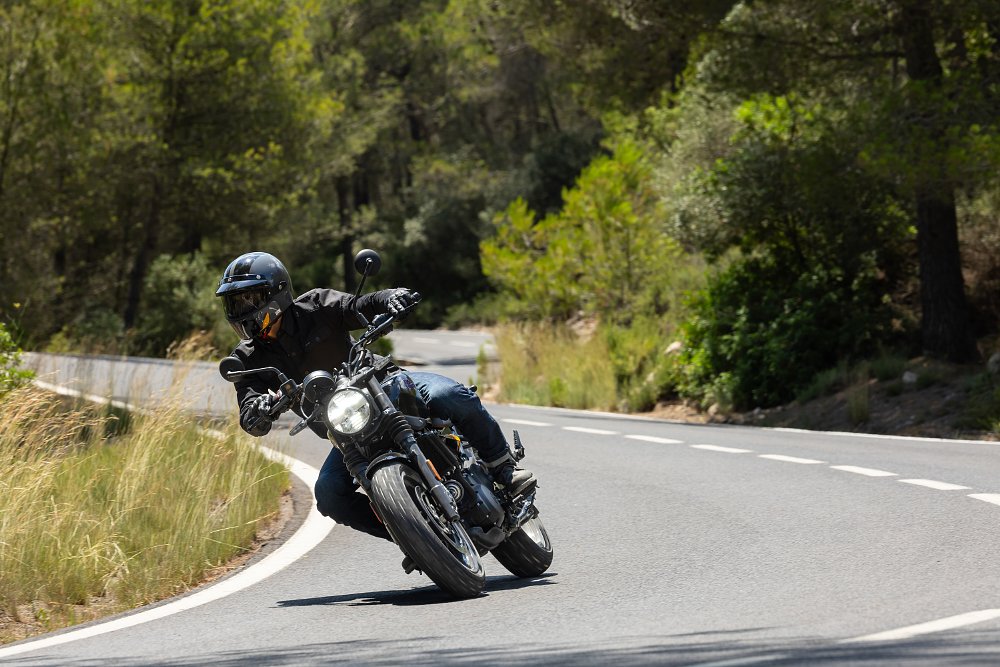
No difference
One major criticism I piled on the Himalayan concerned its Tripper navigation. The system paired to my device easily enough, but in order to maintain the Bluetooth connection, it required my phone’s screen to remain on. I had high hopes that Royal Enfield addressed that issue by now. After all, I rode the Himalayan nearly seven months ago. Let’s just say, I was let down. Before ever connecting my phone to the Guerrilla, several colleagues called out the issue. As soon as they exited the app or put their phone into standby mode, the connection dropped. New bike, same issue. I wasn’t mad. I was just disappointed.
In speaking with Matt Cardenas, Vehicle Engineering Team Leader at Royal Enfield’s U.K. headquarters, I learned that implementing a solution wasn’t as straightforward as I’d assumed. He explained that many smartphone operating systems (iOS, Android, etc.) changed their architecture in response to the Facebook–Cambridge Analytica data scandal uncovered in 2018. To better safeguard the end user’s personal information, many devices now limit the data that third-party apps can access when they’re operating in the background. Data that the Royal Enfield app needs to operate.
That clarification laid bare the situation, but it also posed the question: If I have to leave my phone’s screen on, why use the Tripper feature at all? Why not utilize a handlebar phone mount and Google Maps (sorry, Apple Maps) instead? In that case, the user could also charge their device with the Guerrilla’s bar-mounted USB-C port. Those are questions individual owners will need to answer for themselves. That’s assuming they can even access the app, something I wasn’t able to accomplish during the press launch.
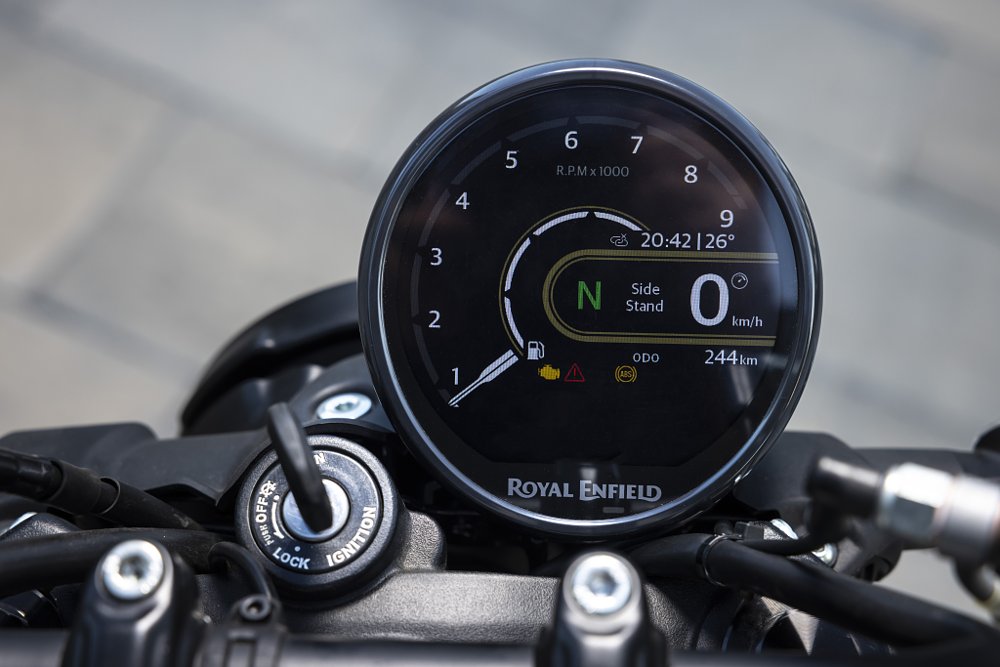
Riders hoping to connect to the Guerrilla’s interface must first download the market-specific Royal Enfield app (North America for me). After logging in or registering for an account, the app guides the user through the pairing process. Easy peasy, right? Not so fast. After entering my email address, a prompt informed me that I didn’t have an existing account and that I’d need to create one.
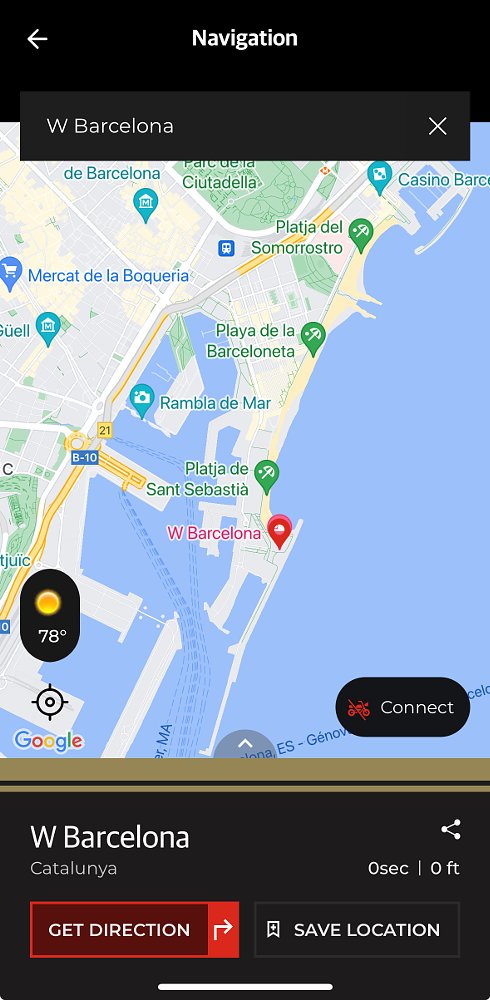
“Wait,” I thought, “didn’t I sign up during the Himalayan launch?” That thought would turn out to be correct. I entered my name, email address, and phone number just for the app to tell me my account already existed. It then reverted me back to the initial screen. I was trapped in app purgatory. (It's a special kind of smartphone hell.) Only after bringing the issue to Cardenas’ attention, was I finally able to log in. Unfortunately, that didn’t occur until after the ride ended, as troubleshooting the issue required help from remote Royal Enfield employees.
Aside from the Tripper’s trip-ups, navigating the rest of the system also requires a series of secret handshakes. For instance, riders access the menus by pressing the five-directional joystick down (not in). With no icons or markings, that’s hardly self-explanatory. The same goes for pressing the toggle switch left, which pulls up the secondary readouts (fuel range, trip meter, etc.) in the dash’s lower third. Maybe most confusing is the Home button located at the back of the left switchgear. When short pressed, it actually functions as a back button within the folder system. The math isn't mathing.
My final gripe rests with the Mode button. The Guerrilla only has two ride modes: Performance and Eco. Yet, you can only switch between them under strict circumstances. One, you can’t be actively riding. That’s understandable. What isn’t understandable is that you can’t change them without the engine running, either. Before turning the ignition, I figured I’d change into Eco mode. That was a mistake. Upon firing the bike up, an error icon appeared on the dash and the ride mode reverted to Performance. Only after turning the bike off, back on, and firing up the engine, was I able to change the ride mode. Good grief, Guerrilla.
The difference maker
The Himalayan arrived as Royal Enfield’s most advanced model to date. By the brand’s standards, it represented a premium offering. The Guerrilla upholds that standard. Sure, it concedes in some areas, and yes, it trips over itself in others, but in both instances, they’re nice-to-haves, not need-to-haves. When it comes down to doing what a roadster does, the Guerrilla delivers, and then some. That's the biggest difference Royal Enfield’s changes make.
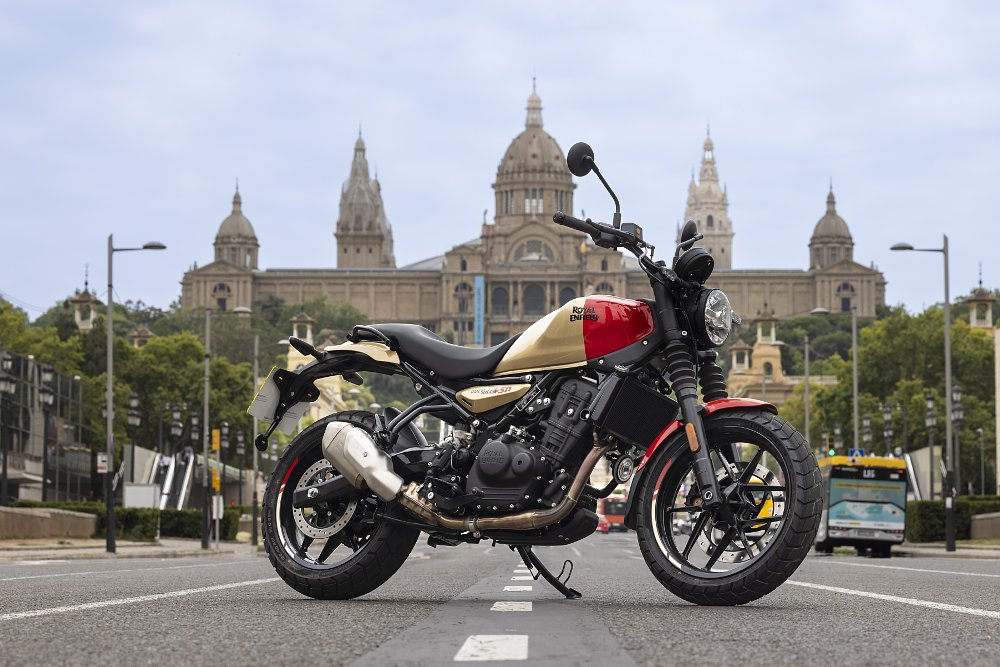
If you’ve made it this far, you’re probably interested in the Guerrilla 450 as an affordable option within the increasingly popular, and populated, small-bore naked bike category. Therein lies the rub. Royal Enfield will only reveal the model’s U.S. pricing information at a date closer to its North American release. That’s not expected until early spring of 2025.
With the Triumph Speed 400 starting at $4,995 and CFMOTO’s 450NK retailing for $5,399, it’s safe to say that Royal Enfield has its work cut out for it. Last Tuesday, the Indian firm finally unveiled the Himalayan 450’s $5,799 starting price. Saying the Guerrilla’s MSRP will come in under that figure is far from a bold prediction. Just how much, is the question? When it comes down to it, Royal Enfield’s changes make a big difference, but the Guerrilla’s price will be the big difference maker.
| 2025 Royal Enfield Guerrilla 450 | |
|---|---|
| Price (MSRP) | TBA |
| Engine | 452 cc, liquid-cooled, four-valve, single |
|
Transmission, final drive |
Six-speed, chain |
| Claimed horsepower | 40 @ 8,000 rpm |
| Claimed torque | 29.5 foot-pounds @ 5,500 rpm |
| Frame | Steel tubular twin-spar |
| Front suspension | Showa 43 mm fork, non-adjustable; 5.5 inches of travel |
| Rear suspension | Showa shock, adjustable for spring preload; 5.9 inches of travel |
| Front brake | Single ByBre two-piston caliper, 310 mm disc with ABS |
| Rear brake | ByBre single-piston caliper, 270 mm disc with ABS |
| Rake, trail | 21.8 degrees, 3.6 inches |
| Wheelbase | 56.7 inches |
| Seat height | 30.7 inches |
| Fuel capacity | 2.9 gallons |
| Tires | CEAT Gripp XL Rad Steel, 120/70R17 front, 160/60R17 rear |
| Claimed weight | 405 pounds |
| Available | Spring 2025 |
| Warranty | 24 months |
| More info | royalenfield.com |




